The village of Dachuan – in Yongjing county, Gansu province, China – endured great suffering between 1948 and 1991. It also saw just a little bit of redemption. 85% of households in Dachuan claim male-line descent from Confucious, China’s foundational moral philosopher. This quirk of ancestry hurt the villagers under Mao, failed to save them from forced resettlement, and in the 1990s brought them a measure of solace. It’s a very human story. A fictionalized version of the village of Dachuan makes a compelling site for equally human RPG adventures.
This post is based on fieldwork conducted by Jun Jing in the early 1990s.
This post is brought to you by beloved Patreon backer Colin Wixted. Thanks for helping keep the lights on! If you want to help keep this blog going alongside Colin, head over to the Patreon page – and thank you!
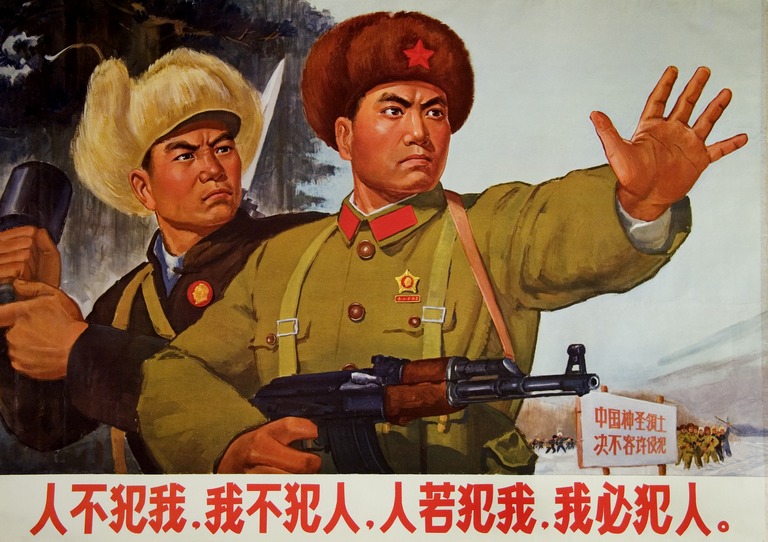
Dachuan today sits on the edge of a reservoir formed by a dam on the Yellow River. It’s squeezed into a narrow slope between a line of barren peaks and the marsh that lines the reservoir. There’s little room for farmland, and that makes life hard. Gansu as a whole was the poorest province in China through the relevant period. It’s dry, windswept, and prone to erosion. Even by Gansu standards, Dachuan was dealt a bad hand. A 1992 census of the village found 3,300 residents in 600 households. Of those families, 85% had the surname Kǒng. That’s a big deal in China! It’s the same family name Confucius had (‘Confucius’ is a Latinization of Kǒng Fūzǐ). The Kǒng families of Dachuan claim to be descendants of Confucius. The idea is foundational to the village’s identity and has caused no end of grief.
Dachuan is the center of a Kǒng ancestral cult in Yongjing county. Kǒng family members from 23 villages in Yongjing trace their descent to a 41st-generation descendant of Confucius who took an important military assignment in Guangzhou around 900 A.D. One of his descendants moved to Gansu province between 1271 and 1368. Eight generations later, four Kǒng brothers settled a site along the Yellow River that was deemed auspicious in traditional geomancy. That site grew into the village of Dachuan.
Coming from a Kǒng family matters. Kǒngs hold power in Dachuan. Between 1950 and 1992, the village chief, the Party boss, the accountant-general, the leaders of the eight communal production teams, and the primary school principal all had the surname Kǒng. Outside Dachuan, members of Kǒng families historically enjoyed reduced taxes and exemptions form corvée labor. Admittedly, the Dachuan Kǒngs were never granted these privileges, but it’s a sign of the esteem in which Kǒng ancestry may be held.
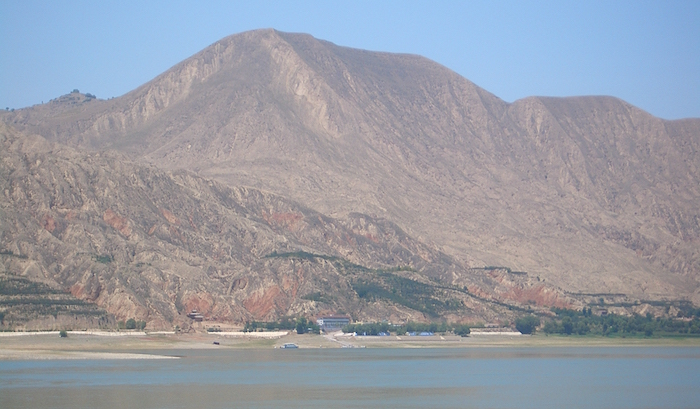
Image credit: Vmenkov. Released under a CC BY-SA 3.0 license.
After the fall of the Qing dynasty in 1912, the Warlord Era and the Civil War saw a decline of Kǒng prestige. The Nationalists, Communists, and warlords were in no great hurry to recognize the feudal privileges Kǒng families once enjoyed. In 1930, the national Kǒng clan decided shore up its waning authority. The Duke of Yansheng, the hereditary clan head, urged Kǒng families scattered across China to send their genealogies to his court so they could be verified and certified as ‘real’ Kǒngs. Dachuan responded and their branch of the family was recognized in 1937.
Dachuan is a treasure trove of stories about Confucius. Even though few villagers have visited Confucius’ far-away home city of Qufu, folks in Dachuan talk about Qufu as though it is their city, as though they know every house and stone. They know stories about how Confucius was so ugly as a baby his mother abandoned him in a cave, but an eagle and a tiger guarded and fed the baby until his awe-struck mother took him back. They know stories of the signs that marked his teaching as important, like earthquakes, rainbows, and the appearances of rare animals. They know stories they learned in primary school and stories they learned from local genealogists. If you want Confucius stories – especially some they don’t tell in Qufu – Dachuan is the place to go.
The Communist victors of the Chinese Civil War didn’t much care for Confucius. In 1948, Dacuhan sent a representative to Qufu to pick up one of the enormous, multi-volume genealogies of the Kǒng clan – so big the postal system refused to ship them. The representative made it to Qufu just ahead of the People’s Liberation Army. His copy of the genealogy, carried out of Qufu in two rickshaws, was the last copy ever sent. When the Communists took Qufu, they massacred the Nationalist garrison under a flag of truce and dissolved the Kǒng clan council. The Duke of Yansheng had already fled. His descendants live in Taiwan. The Dachuan-ordered copy of the Kǒng genealogy was burned in 1966 during the Cultural Revolution.
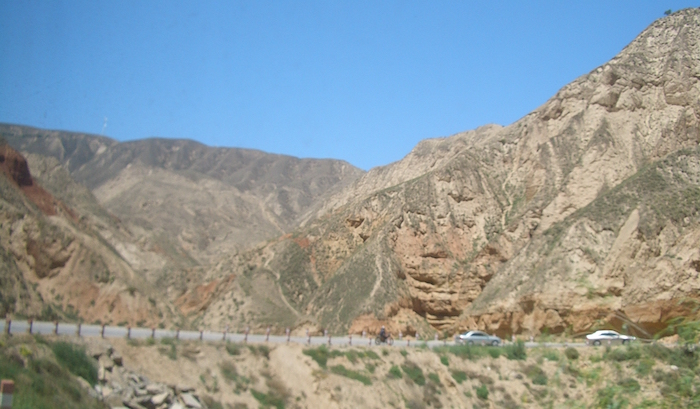
Image credit: Vmenkov. Released under a CC BY-SA 3.0 license.
The Kǒng families of Dachuan butted heads with their new Communist local government. The Kǒng families had moral authority, they often mediated disputes, and they organized daily life in the village. They had power at the local level, power the county Communist Party resented. So in the 1950s the Party transferred decision-making power from local familial processes to Party loyalists. They couldn’t eliminate Kǒng influence completely, though. Because 85% of the village was Kǒng, the empowered Party loyalists mostly had the surname Kǒng. And when the Party implemented collective farming, the eight “communal production teams” were simply Dachuan’s eight Kǒng lineages.
A bigger blow yet to the legitimacy of the Kǒng families came in 1958. Dachuan had an ancestral hall devoted to Confucius. This was a place Kǒng family members could go to honor their esteemed ancestor. But the Party shut down ancestral halls county-wide, and Dachuan’s hall to Confucius was shuttered.
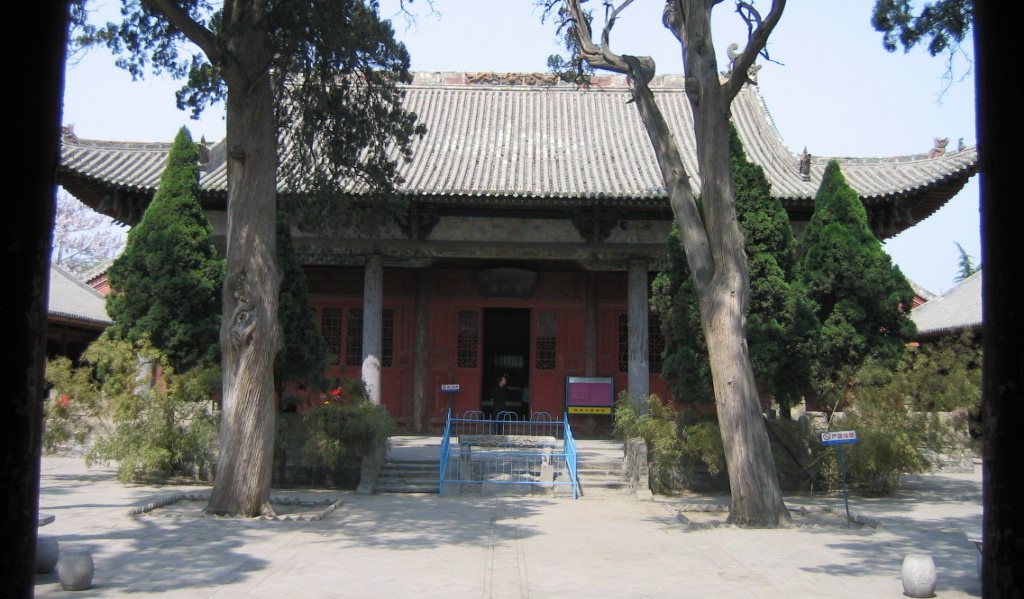
Image credit: dayu490301. Released under a CC BY 3.0 license.
Also in 1958, the government announced it would build a hydroelectric dam on the Yellow River downstream of Dachuan. Before this, the village wasn’t squeezed on a narrow stretch of land between mountains and marsh like it is today. It wasn’t well-off by any means, but there was enough farmland for everyone. The new reservoir that would form behind the dam would flood out village and farmland alike. Nonetheless, few people moved. There are several reasons for their reticence. For one, the Nationalists had attempted a similar venture in 1945, but abandoned it when the Civil War intensified. Villagers interpreted this as an engineering failure. If the Nationalists and their American allies couldn’t build this dam, the Communists surely couldn’t either.
For another reason, Communist officials did a poor job explaining how serious they were. When resettlement committee inspectors visited Dachuan to see what all would be lost, folks interpreted this as a prelude to another round of collectivization and lied about what they had. The government can’t collectivize what it doesn’t know about, right? But when it turned out that the resettlement committee was serious, folks realized the government couldn’t help you move what it didn’t know about either.
For a third reason, it was a bad time. 1959-1961 were the Three Hard Years following the failure of the Great Leap Forward. It was the deadliest famine in human history and one of the greatest man-made disasters of all time. Across China, tens of millions died. Who has time for relocating when you’re eating potato stems and elm bark? Finally, there was the false hope that always pops up around hydropower projects: if we don’t leave, they can’t flood the valley.
As always happens to hydropower holdouts, the government was willing to use force to evict the people of Dachuan. In December of 1961, armed militiamen arrived in the middle of the night. They first entered homes that didn’t have young men. The milita dragged the old women out, tied ropes around the homes’ supporting pillars, and collapsed the houses. One by one, the government destroyed every house in Dachuan. As dawn broke, panic set in. People dug through the rubble for whatever they could salvage. Half the population relocated to nearby villages. Half retreated uphill beyond the planned limits of the reservoir: that’s the site of the modern, reduced, village of Dachuan. Some folks stayed behind in the ruins to help guard and transport the rubble to the new site to use as building materials. In March of 1962 the new dam’s floodgates closed and the valley filled up. The final stay-behinds had to wade through the rising water to escape.
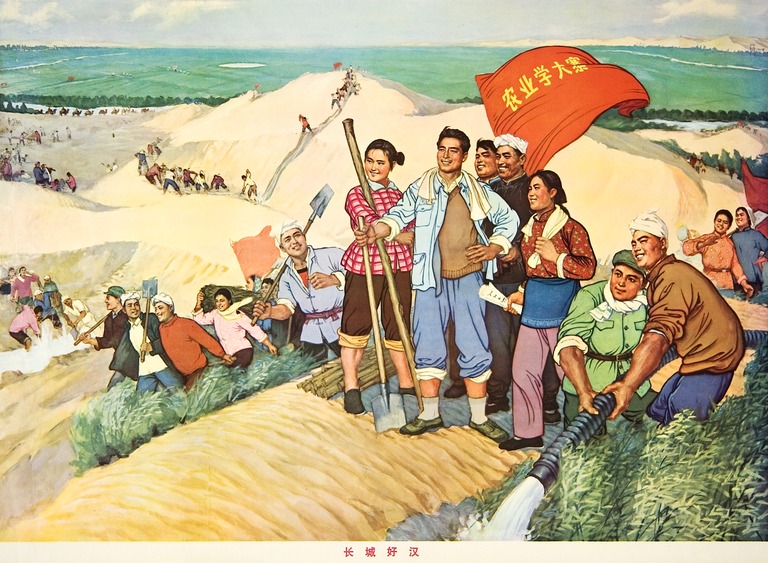
The flooding was a disaster for the dead as well as the living. For centuries, the people of Dachuan had buried their dead near the village. The Kǒng families defined their identities around Confucius, Mr. Filial Piety himself. It was unthinkable for good Confucians to let the graves of their ancestors be flooded out. But there were no resources and no time to move the graves properly: with appropriate ceremony, traditional corpse-handlers, and miniature caskets. There wasn’t even any food! How could a villager go through the laborious process of digging new graves without food to sustain him? For the most part, they didn’t. Much to their shame, the villagers were barely able to dig up their immediate relatives. They picked up the bones with chopsticks and put them in cement bags. The bones got mixed up and couldn’t be reburied separately. The sites of the new graves weren’t selected according to geomantic principles, but were dug haphazardly and shallow. They resembled the graves of miscarried infants, not honored ancestors.
The majority of graves couldn’t be moved. No one had the strength to dig up generation after generation of their forebears. The government was concerned that flooded graves under the reservoir might pose a health hazard. So construction workers removed “twenty tons of garbage, human waste, and material detrimental to people’s health.” The latter is a euphemism for tombs. Many graves were above the waterline, though. With a shortage of land to build on, people started putting up their makeshift houses atop buried tombs. Maybe it was supposed to be a temporary measure, but as the new version of Dachuan took shape, it became permanent. The houses of the dead and the houses of the living were right on top of one another.
This relocation was a hammer blow to the sense of identity of the Kǒng families of Dachuan. They’d already been forced to shutter their ancestral hall. Now they’d lost the land their forebears settled five hundred years ago and terrorized those very same forebears by losing or mistreating their bones. They’d been forced to violate a long list of Confucian taboos, and the Kǒng families centered their identities around their Confucian heritage. The process was traumatic.
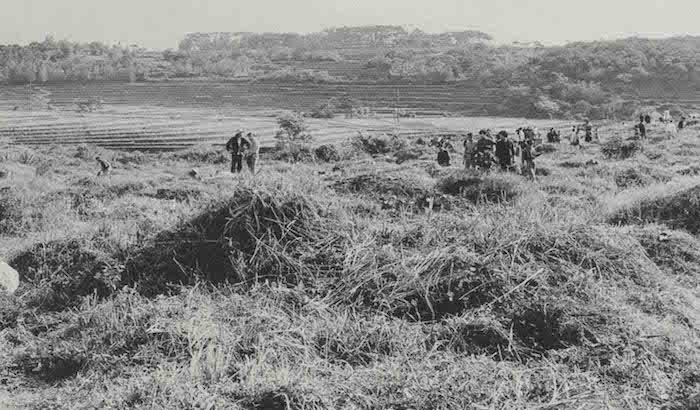
Image credit: 蔡坤煌(提供者:蔡葉偉). Released under a CC BY-SA 3.0 license.
Dachuan’s ancestral hall wasn’t done yet. Old Dachuan wasn’t entirely flooded; only half the village was under the reservoir. The ancestral hall was not submerged. But the land it was on soon turned into a marsh. The hall started to rot.
In 1973, Mao Zedong, chairman of the Chinese Communist Party, launched a nationwide campaign to discredit two of his political rivals within the Party. One (Lin Biao) had already died under suspiciously convenient circumstances. The other (Zhou Enlai) was still alive and powerful enough that even Mao couldn’t go after him directly. So instead he went after the memory of Confucius. Some of Confucius’ actions 2,500 years ago mirrored some of those Zhou Enlai was undertaking in the early 1970s. By discrediting Confucius, Mao hoped he could indirectly discredit Zhou. This national political maneuvering, aimed at a Party audience, set off a bizarre kerfuffle in Dachuan.
In 1974, the local Communist Party announced that the last material evidence of Confucianism should be removed: the rotting ancestral hall in Dachuan would be knocked down and its building materials used to construct a warehouse. Before the Party’s workers could reach Dachuan, members of the Kǒng families came down from their new village to knock the ancestral hall down themselves. Then they hid the building materials amidst their own supplies. If they were going to lose the hall either way, they might as well keep the materials. The Party demanded the supplies be handed over, but the village explained that the building materials were so intermingled with existing stocks there was no way to know what belonged to the old hall.
But the Party was still determined to put on a public show of its devotion to Mao’s anti-Confucian campaign. So they brought middle-school students to where the hall used to be and had them build a grave-like mound. Then the kids were led up onto the mound and made to shout slogans about the evils of Confucius. Many of the children were from Dachuan Kǒng families. The business with the children was embarrassing for Dachuan, but no one dared do anything about it. There were a hundred armed militiamen less than a mile away and the Party suggested they were looking for an excuse to use them. No one provided the excuse.

Image credit: 猫猫的日记本. Released under a CC BY-SA 3.0 license.
In 1991, the Kǒng families of Dachuan built a new ancestral hall in Dachuan’s new location. This was permissible thanks to the new, post-Mao government’s view that the Cultural Revolution had been a mistake, that it was desirable for China to maintain continuity with its pre-Communist past. Still, there were some changes. There are places in the hall to honor not just Confucius and other Kǒng ancestors, but also many of Confucius’ disciples, great philosophers in their own right. There’s a new ceremony in Dachuan that invites the whole village to participate, not just the Kǒng families. Thus, while this is still an ancestral hall, the ‘ancestral’ part is downplayed. This was part of a broader effort on the part of the builders to avoid giving the impression they were reviving an illicit, superstitious cult.
Still, a neutered ancestral hall is better than no hall at all. And there’s considerable continuity between this one and the old one. All the correct rituals were observed in constructing the new hall. And half the material used to build it came from materials saved when the village pulled down their old hall in 1974. The new ancestral hall offers an opportunity for redemption for the terrible wrongs the people of Dachuan committed when relocating their village. The Kǒngs of Dachuan see the new hall as a chance to make up for the sins they committed back then.
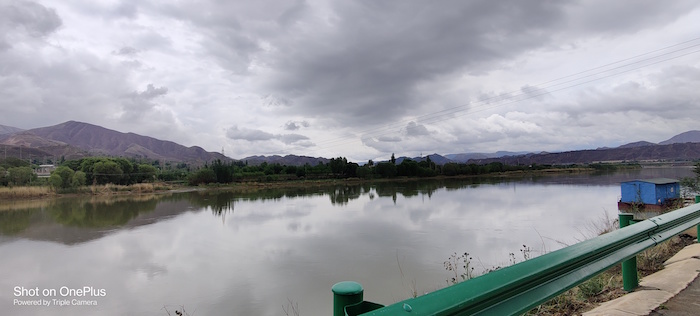
Image credit: 吾乃叶子客. Released under a CC BY-SA 4.0 International license.
A fictionalized version of Dachuan could make a great adventure site in an RPG! I’d use a version of Dachuan from just before the 1974 destruction of the old ancestral hall. There’s something visually arresting about a village growing beside the rotting remains of what it once was. That timeline also sets the stage for a confrontation like the 1974 race to destroy the hall, where the PCs may attempt to stop your setting’s fictional bad guys from getting to the hall and knocking it down first.
If you have compassionate players, you might find an adventure hook in getting folks out of a village that’s going to be flooded. You’re passing through a settlement and find a forced evacuation about to start. How much state cruelty are the PCs willing to ignore in the name of the greater good of the hydroelectric station? Can they really stand by and do nothing, especially when they learn the villagers are receiving compensation too insubstantial to help?
In a different style of campaign, PCs might come here to learn secrets hidden in the stories about whatever ancient figure your fictional Dachuan claims descent from. Once the PCs are here, they might get caught up in an adventure or two around the village. They could be based on the 1974 destruction of the old hall, on blackmailing the local government into permitting the construction of a new hall, or finding a source of compensation for all the people who lost their homes and farmland.
If there are ghosts in your setting, I wouldn’t expect to find any vengeful dead in your fictionalized version of Dachuan. I’m sure the dead get it. I would expect aggrieved dead: spirits who feel tormented and are complicating life in the village. There’s no real solution, no way to appease them short of a massive rebuilding effort. The presence of such spirits means when you’re seducing the mayor, a wailing shade might pop in and spoil the mood. Or when you’re breaking into the bank, you might pose as restless ghosts as a disguise. Narratively, the spirits are best not as an adventure unto themselves, but as a way to complicate whatever the PCs are up to, for good or ill and preferably unpredictably.
But the thing I love most about Dachuan as an adventure site – especially post-flood – is how fundamentally human it is. These are people grieving for what they did, though they had no choice but to do it. Regardless of our ethical framework, of how much value we do or do not place on the bones of our loved ones, I think we can all recognize ourselves in the people of Dachuan. And that’s going to make any adventures set here pop.
Source:
The Temple of Memories: History, Power, and Morality in a Chinese Village by Jun Jing (1996)






